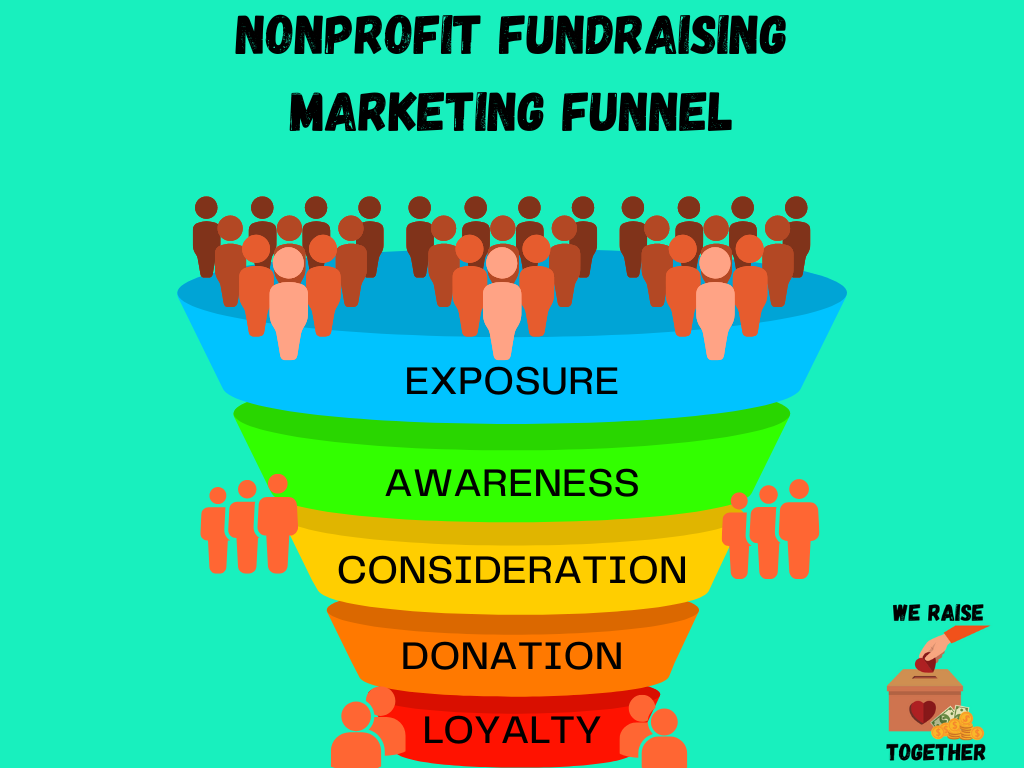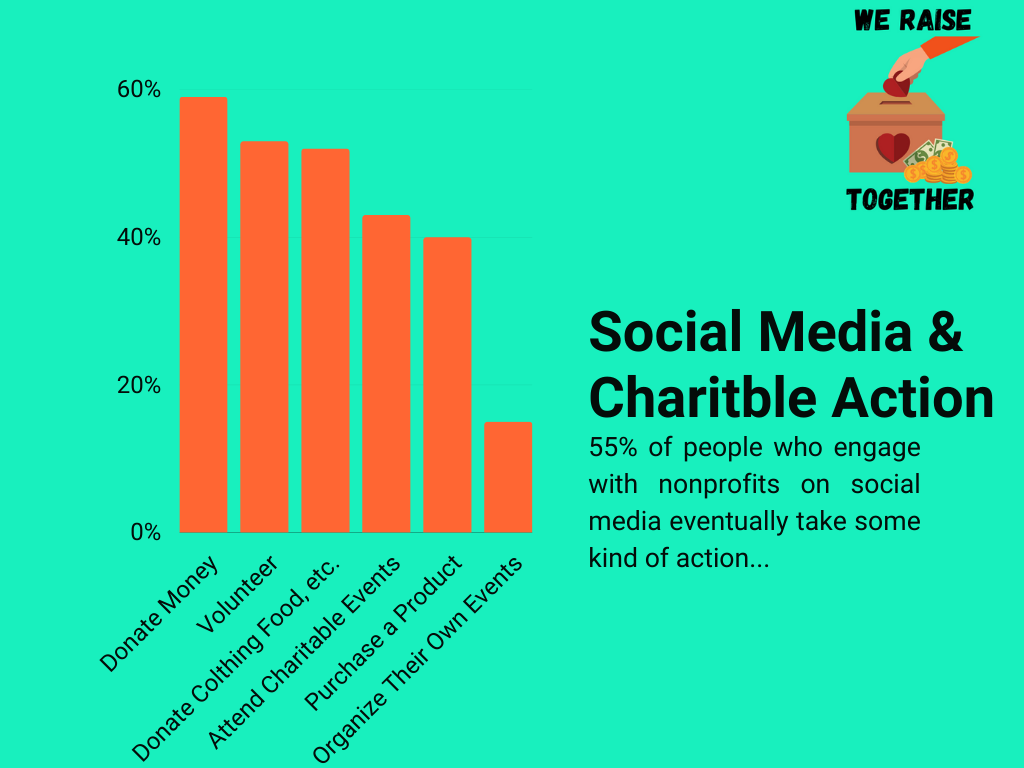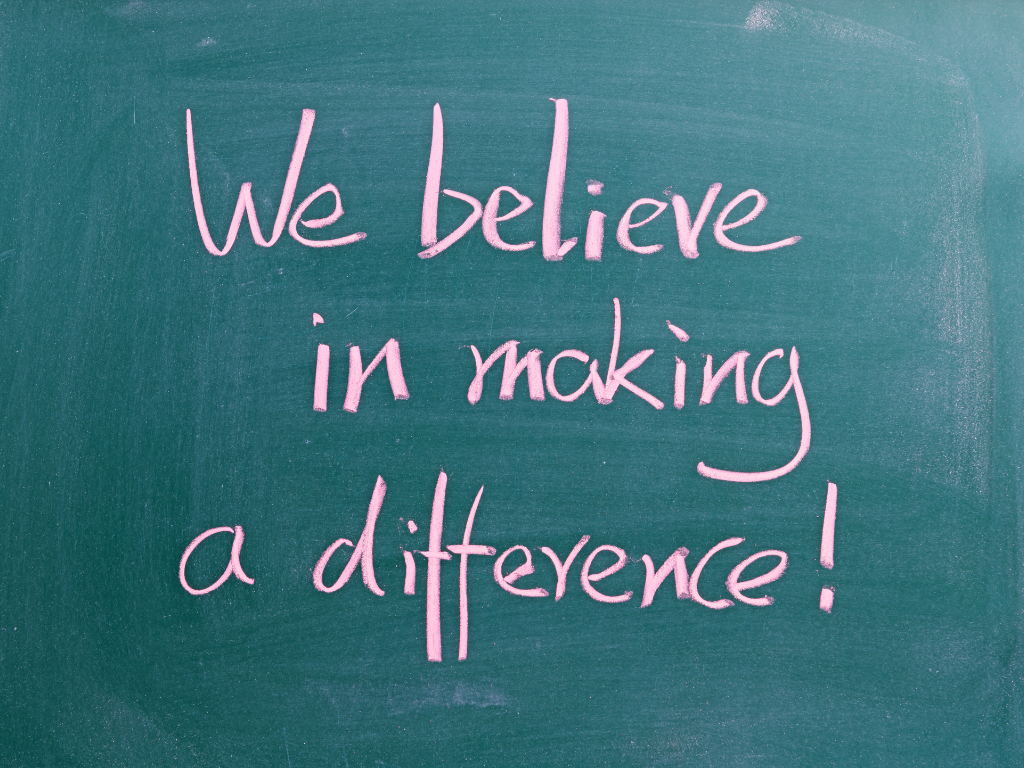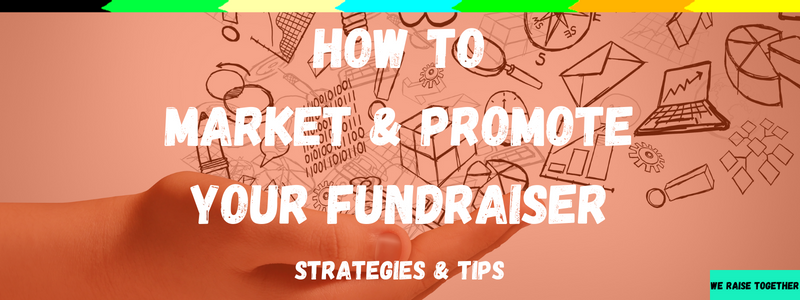Are you looking for ways to promote your fundraiser and get your cause noticed by more people?
Then this article is for you!
Here, we’ve compiled the best tips and strategies for promoting and marketing your fundraiser.
From leveraging social media to email marketing, we cover a range of tactics to help you reach your fundraising goals.
So, whether you’re the leader of a large nonprofit or a school club, let’s dive in and discover how to promote and market your fundraiser like an expert!
Table of Contents
- Marketing Funnel For Fundraising
- How To Promote A Fundraiser
- 2. Use Email Marketing
- 3. Try Paid Online Advertising
- 4. Utilize Offline Promotion
- 5. Partner With Local Businesses
- 6. Host Fundraising Events
- 7. Offer Incentives
- 8. Use Online P2P Platforms
- 9. Empower Your Supporters And Team
- 10. Tap Into Community Groups
- 11. Emphasize The Impact
Marketing Funnel For Fundraising
Before diving into the specifics of promoting a fundraiser, it’s important to understand the nonprofit marketing funnel.
Just like any product or service, fundraising also follows a funnel with five stages:
- Exposure
- Awareness
- Consideration
- Conversion
- Loyalty

Exposure is the stage where people first come across your fundraiser.
Awareness is the stage where people start to learn about the cause and the details of the fundraiser.
Consideration is the stage where people start to think about whether they want to contribute to the fundraising campaign or not.
Conversion is the stage where people make a donation or contribute in some other way.
Finally, Loyalty is the stage where donors decide whether or not to support your cause in the future.
Now, let’s take a look at the steps you can take to promote your fundraiser at each stage of the funnel.
1. Exposure
To create exposure for your fundraiser, you need to get the word out to as many people as possible.
Here are some ways you can create exposure for your fundraising campaign or nonprofit:
- Social Media: Use social media platforms like Facebook and and Instagram to promote your fundraiser. Share information about it and encourage people to share it with their networks.
- Email Marketing: Send out an email to your email list with details about the fundraiser.
- Flyer Distribution: Print flyers with details about the fundraiser and distribute them in public places.
- Local Media: Reach out to local newspapers, radio stations, and TV stations to see if they’ll cover your fundraiser.
2. Awareness
Once you get your fundraiser noticed, it’s important to educate people about the cause and the details of your campaign.
Here are some ways you can create awareness for your fundraiser:
- Social Media: Share stories and statistics about the cause you’re fundraising for on social media.
- Blogging: Write blog posts about the cause and why it’s important to you.
- Video Marketing: Create videos about the cause and share them on social media.
- Personal Outreach: Reach out to your personal network and tell them about the cause and the fundraiser.
3. Consideration
At the consideration stage, people are starting to think about whether they want to contribute to your fundraiser or not.
Here are some ways you can motivate people at this stage:
- Share Success Stories: Share stories about how the fundraiser has helped others in the past.
- Personalize The Fundraiser: Encourage people to contribute by making the fundraiser personal. For example, ask people to donate in honor of your loved one who’s been affected by the cause.
- Create a Sense of Urgency: Encourage people to contribute by creating a sense of urgency. For example, let them know there’s only a limited time to donate.
4. Conversion
At the conversion stage, people are ready to contribute to your fundraiser or nonprofit organization.
Here are some ways you can encourage people to give:
- Make It Easy To Donate: Ensure that your donation process is simple and easy to navigate.
- Say Thank You: Show your appreciation to those who’ve contributed by saying thank you.
- Keep People Updated: Keep people updated on the progress of the fundraiser and how their contributions are making a difference.
5. Loyalty
Donor loyalty is crucial for the long-term success of your fundraising efforts.
After all, you want your donors to keep coming back and contributing to your cause.
Here are some ways you can build donor loyalty:
- Personalize Your Thank You Messages: When you thank your donors, make sure you personalize the message. This shows that you appreciate them as people and not just as donors.
- Keep In Touch: Keep your donors updated on the progress of your cause even after the fundraiser is over. Send regular updates via:
- Social media
- Newsletter
- Provide Opportunities For Involvement: Encourage your donors to get involved in ways besides donating. For example, ask them to volunteer or spread the word about your cause.
- Recognize Donors Publicly: Recognize your donors publicly on your website, social media, or other platforms. This not only shows appreciation, but also encourages others to contribute.
By focusing on donor loyalty, you can build a strong community around your cause and continue making a difference for years to come.
How To Promote A Fundraiser

Once you’ve planned your fundraising campaign and set your goals, the next step is to promoting your fundraiser.
While it can be challenging, the right tactics can spread the word and attract support for your cause.
In this section, we explore the best tips for marketing your fundraiser.
From leveraging social media to hosting fundraising events, we cover everything you need to reach your fundraising goals.
So, let’s dive in and discover the best ways to promote a fundraiser!
1. Leverage Social Media
Social media is a powerful tool for reaching a wider audience.
In fact, 55% of people who engage with a nonprofit organization on social media eventually take some kind of action:

- Donate money (59%)
- Volunteer (53%)
- Donate clothing, food, etc. (52%)
- Attend charitable events (43%)
- Purchase a product (40%)
- Organize their own events (15%)
Here are some tips and tricks for leveraging social media to boost your fundraising efforts.
Choose the right platforms
It’s important to know your target audience and where they’re most active on social media.
Different platforms have different audiences and content formats, so it’s choose the ones reaching the right people.
For example, if your target audience is mostly young people, Instagram and TikTok might be good options.
On the other hand, if your audience is more professional, LinkedIn might be a better choice.
Social media platforms you should think about using include:
Create content
Social media users are bombarded with content, so you need to make sure your posts stand out.
Use eye-catching visuals, such as images, videos, and graphics, to grab users’ attention.
Additionally, try creating compelling stories to show potential donors the impact of their donation.
Finally, always include a call-to-action (CTA) in your post, such as “donate now” or “share with your friends”.
Engage with your audience
Social media is a two-way street. So, engage with your followers by responding to comments and messages, and by sharing posts related to your cause.
When someone donates to your cause or shares your post, take the time to thank them publicly.
This way you can build trust and loyalty, which can lead to more donations.
Use hashtags
Hashtags are a great way to increase the visibility of nonprofits and other organizations.
First, do some research to find the most relevant and popular hashtags for your cause. Then, include them in your posts.
Make sure to keep the number of hashtags reasonable (around 3-5 per post) and avoid using irrelevant or overly generic hashtags.
2. Use Email Marketing

Email marketing is a great way to keep your supporters engaged with your fundraising campaign.
Here are some tips for creating effective email campaigns.
Build your email list
The first step to successful email marketing is building your email list.
Make sure you collect email addresses from all of your supporters and donors.
You can also try offering incentives, such as exclusive content or early access to fundraising events, to encourage sign-ups.
Segment your email list
Not all of your supporters will be interested in the same content.
So, it’s important to segment your email list and send targeted messages to specific groups.
For example, you might send different emails to donors who’ve already contributed versus those who haven’t.
Use compelling subject lines
The subject line is the first thing your recipients see, so it’s important to make it attention grabbing.
For example, use action-oriented language and personalization to entice them to open the email.
Personalize your content
Personalization can increase the number of people who decide to interact with your email.
So, use your recipient’s name and past donation history in the email to make it feel more relevant to them.
Include a clear call-to-action
Every email should include a clear call-to-action encouraging the reader to take a specific action.
For example, ask the recipient to make a donation or share the email with friends.
Test and optimize
Testing different subject lines, content, and calls-to-action can help you improve your campaigns over time.
Take a look at the email campaign data to see what works best so you can optimize your strategy.
Follow up
Follow-up emails can be effective at encouraging donations from those who didn’t initially respond.
Consider sending a follow-up email to recipients who didn’t open the first email or who clicked through but didn’t donate.
3. Try Paid Online Advertising

Paid online advertising can be an effective way to promote your fundraiser if you know what you’re doing.
Use the following tips to start trying online ads:
- Choose the right platform: Choose the platforms most relevant to your target audience and that align with your advertising goals. There are plenty of platforms to choose from, including:
- Google Ads
- Facebook Ads
- Instagram Ads
- Set a budget: Determine how much you can afford to spend on advertising and set a budget. Start with a small budget and scale up if you see results.
- Define your audience: Defining your audience helps you create ads that resonate with them and encourage them to take action. You can do this by thinking about their:
- Demographics
- Interests
- Behaviors
- Create compelling ads: Your ads should be visually appealing, clear, and concise. Use images or videos, a clear call-to-action, and messaging tailored to your audience.
- Test and optimize: Test different ad formats, images, and messaging to see what resonates best with your audience. Use A/B testing to compare how well different ad variations work.
- Monitor and adjust: Monitor the performance of your ads regularly and make adjustments when you need to. This might include changes to your:
- Targeting
- Messaging
- Budget
4. Utilize Offline Promotion

While online promotion is important, don’t overlook the power of offline promotion to spread the word about your fundraiser.
Here are some strategies for using offline promotion:
- Distribute flyers and posters: Flyers and posters can be great for reaching a local audience. Distribute them in high-traffic areas such as:
- Community centers
- Libraries
- Coffee shops
- Use branded merchandise: Consider selling branded merchandise or giving it away as a reward for donations. Branded merchandise could include:
- T-shirts
- Hats
- Wristbands
- Pitch to local media: Pitching your fundraiser to local media outlets can help boost awareness for your cause. Consider reaching out to:
- Local newspapers
- TV stations
- Radio stations
- Utilize word-of-mouth: Word-of-mouth is a can really help get people excited about your cause. Encourage your supporters to spread the word about your fundraiser to their friends and family.
5. Partner With Local Businesses

Partnering with local businesses can be a win-win for both your fundraiser and the businesses.
Use these tips to find and partner with local businesses:
- Look for relevant businesses: Start by looking for businesses that are relevant to your fundraiser. For example, if you’re raising money for a local animal shelter, consider partnering with a pet store or veterinary clinic.
- Reach out to potential partners: Once you’ve identified potential partners, reach out to them with a proposal for partnership. Be clear about what you’re looking for and what you can offer in return, such as exposure or recognition.
- Offer incentives: Offer incentives for businesses to partner with your fundraiser, such as free advertising or a booth at your event.
- Collaborate on events: Collaborate with your partners on fundraising events or promotions. For example, you could host a charity auction at a local restaurant or offer a percentage of sales to your fundraiser.
- Promote your partners: Promote your partners on your website, social media, and other marketing materials. This will help build goodwill and encourage more businesses to partner with your fundraiser in the future.
- Follow up and show gratitude: Follow up with your partners after the partnership is over to show your gratitude and maintain the relationship. This could be as simple as sending a thank you note or sharing the impact of the partnership on your fundraiser.
6. Host Fundraising Events

When it comes to promoting and marketing your fundraiser, hosting events are a great way to get people excited!
Here are some key strategies to consider when planning and promoting your fundraising event:
- Choose the right type of event: Choose an event that aligns with your audience and fundraising goals.There are many different types of fundraising events to choose from, including:
- Find the right venue: The venue you choose will depend on the type of event you’re hosting and your budget. Consider factors such as capacity, accessibility, and location. It could even be virtual.
- Create a compelling theme: A compelling theme can help you generate interest and enthusiasm for your event. Choose a theme that resonates with your audience.
- Provide engaging activities: Provide engaging activities to keep your attendees entertained.
- Follow up with attendees: Follow up with attendees after the event to thank them for their support and encourage further donations. Share the impact of the event and the progress toward your fundraising goal.
7. Offer Incentives

Offering incentives is a fantastic idea for motivating your audience to donate.
Use the following tips to create incentives and promote your fundraising efforts:
- Choose the right incentives: Choose incentives that will appeal to your audience. This could include:
- Exclusive merchandise
- Tickets to an event
- Recognition on social media
- Set clear donation levels: Set clear donation levels and communicate them clearly to your audience. For example, you could offer a:
- Small incentive for donations of $10
- Medium incentive for donations of $50
- Large incentive for donations of $100 or more
- Create urgency: Create urgency by setting a deadline for the incentive or limiting the number available. This will encourage your audience to donate quickly.
8. Use Online P2P Platforms

Peer to peer fundraising platforms allow you to raise money through online donation pages. This makes it easier for people to donate to and share your cause.
To use P2P platforms effectively, consider the following:
- Choose the right platform: Select a platform that is easy to use and aligns with your fundraising goals.
- Customize your page: Create a P2P fundraising page with eye-popping images, videos, and words that communicate your cause.
- Share your page: Sharing your fundraising page through your social media platforms is a great way to increase the visibility of your cause. Better yet, it’s a great avenue to collect donations.
Ultimately, peer to peer fundraising platforms allow you to raise funds and promote your cause at the same time.
9. Empower Your Supporters And Team

Empowering your supporters is a great way to access new networks or people and grow your supporter base.
If you have a fundraising team, it’s also key to give them responsibility so they can feel more connected with their work.
Consider using the following tips to empower your supporters:
- Give them a voice: Encourage your supporters to share their stories and experiences related to your cause. By giving them a voice, you’ll make them feel like they are part of the movement. This can be done through:
- Social media
- Email campaigns
- A dedicated blog
- Provide them with tools: Provide your supporters with the tools they need to fundraise on your behalf. Giving them the resources they need makes it easy for them to support your cause. This could include:
- Fundraising kits
- Social media graphics
- Email templates
- Recognize their efforts: Recognize the efforts of your supporters or team by thanking them publicly or offering incentives. This will make them feel valued and motivated to continue supporting your cause.
- Offer volunteer opportunities: Offer volunteer opportunities to your supporters so they can get involved in other ways besides donating. This will help them feel connected to your cause and increase their loyalty to your organization.
- Create a community: By creating a sense of community, you’ll foster a deeper connection with your team and donors. Create a community around your cause by:
- Hosting events
- Creating a social media group
- Offering exclusive content
10. Tap Into Community Groups

Community groups can be a valuable resource for promoting your fundraiser.
Here are some tips for tapping into community groups.
- Identify relevant groups: Identify community groups relevant to your cause and the audience you want to reach. This could include:
- Local service organizations
- Religious groups
- School clubs
- Reach out to group leaders: Reach out to the leaders of these groups and explain your cause and goals. Ask if they’d be willing to share your fundraiser with their members or consider partnering with you.
- Offer something in return: To encourage group leaders to promote your fundraiser, consider offering them something in return. This could be a:
- Shoutout on social media
- Link back to their website
- Percentage of the funds raised
- Participate in community events: Participate in community events to raise awareness about your fundraiser. This could include setting up a booth at a local fair, or even speaking at a community event.
- Collaborate with other fundraisers: Collaborate with other fundraisers in your community to cross-promote each other’s causes. This will not only help you reach a wider audience, but also create a sense of community around fundraising in your area.
11. Emphasize The Impact

One of the best ways to promote your fundraiser is emphasizing the impact the donations will have.
To emphasize the difference donors can make, keep the following ideas in mind:
- Tell a story: Use storytelling to help your audience connect emotionally with your cause. Share stories of individuals or communities who’ve been impacted by your cause. Also, explain how their lives have been changed for the better.
- Provide specific examples: Provide specific examples of how donations will be used to make a difference.
- Example: If you’re raising money for a nonprofit that provides clean water to communities in need, explain how a certain donation amount can provide clean water for a certain number of people.
- Use visuals: Use photos and videos to help communicate the impact of your cause.
- Example: You could use before-and-after photos to show the impact of your cause on a community.
- Show progress: Show the progress of your fundraiser by regularly updating your audience on the amount of money raised and the impact donations are having. This helps create a sense of momentum.
- Thank donors: Thank donors for their contributions and show them the impact their donations have. This creates a sense of satisfaction and encourages repeat donations.
How To Promote A Fundraiser For Free
Promoting a fundraising campaign can be expensive, especially if you rely on paid advertising and other costly tactics.
However, there are lots of great ways to promote your fundraiser for free or with minimal costs.
In fact, some of the tactics we discussed in the previous section require zero to little investment of money.
These free strategies include:
- Leveraging Social Media
- Email Marketing/Newsletters
- Tapping Into Community Groups
- Empowering Supporters
To learn more about any of these low- to no-cost fundraising promotion strategies, review the previous section.
Finally, keep in mind that those new to fundraising will likely want to stick with these free promotional tactics when starting out.
Once you have a good idea of what works and what you’re best at, then consider investing more heavily.
Ready To Start Promoting Your Fundraiser?
Now that you’ve learned about the best strategies for promoting and marketing your fundraiser, it’s time to start putting them into action!
Whether you decide to leverage social media or tap into community groups, the key to success is staying committed to your cause.
By promoting your fundraiser, you can attract more supporters, generate more donations, and make a real difference in the lives of those who need it most.
So what are you waiting for?
Fill out this form, and we’ll help you get your fundraiser started.
Then, you can promote it like a marketing rock star and see how big of an impact you can make!

